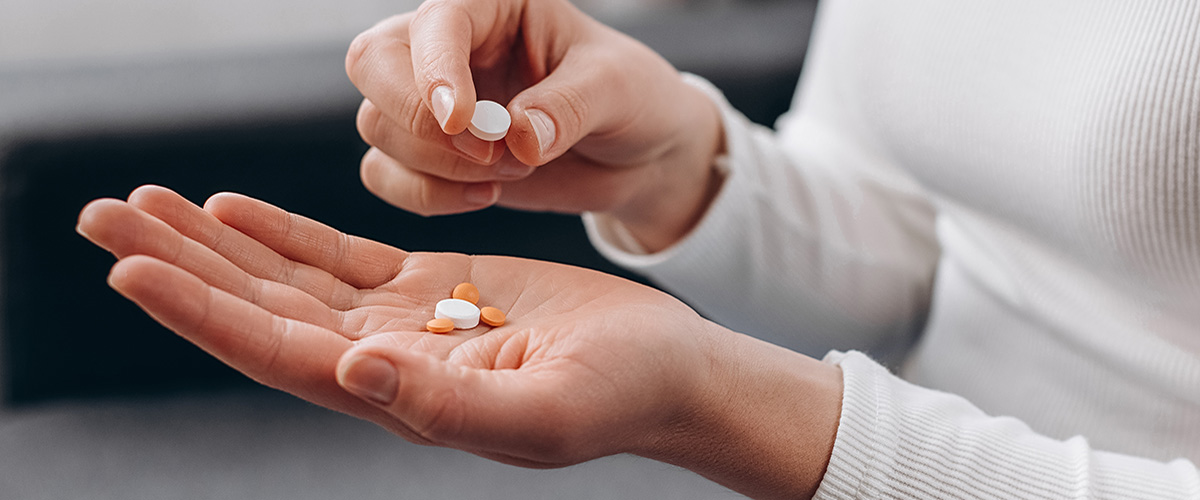Article | 22 May 2025
A walk-through of the latest CJEU case law on the SPC regulation

In 2024, the CJEU delivered two rulings on the interpretation of Regulation (EC) No. 469/2009 of the European Parliament and of the Council of 6 May 2009 concerning the supplementary protection certificate for medicinal products (the SPC regulation):
- Case C-181/24, relating to the designation of a marketing authorisation (MA) under Article 3(d), and
- Joined Cases C-119/22 and C-149/22, relating to the concept of “protected by a basic patent” in accordance with Article 3(a), as well as the relationship between Article 3(a) and (c).
This article summarizes the findings of the CJEU in its latest rulings.
Order of the CJEU of 16 July 2024 in Case C-181/24 – can a revoked marketing authorisation be considered the first authorisation in accordance with Article 3(d)?
Facts and circumstances
In 2010, the claimant obtained a first MA for a medicine containing the active ingredient A. Later, in 2019, this MA was revoked.
In 2021, the claimant obtained a second MA for a different medicine, containing the same active ingredient A. The claimant applied for a Supplementary Protection Certificate (SPC) in Hungary on the basis of this later MA, dedicating the active ingredient A as the product in accordance with the SPC regulation. However, the Hungarian Intellectual Property Office (IPO) rejected the application.
As the reader acquainted with the SPC regulation is aware – article 3(d) states that the MA which forms the basis for the application should be the first MA to market the product in question:
“(d) the authorisation referred to in point (b) is the first authorisation to place the product on the market as a medicinal product.”
As the active ingredient A had been authorized in 2010, the Hungarian IPO ruled that the second MA was not the first MA for the product, i.e. the active ingredient. However – the English language version of Article 3(b), to which Article 3(d) refers, provides that a valid MA must exist on the day the application for an SPC is lodged:
“(b) a valid authorisation to place the product on the market as a medicinal product has been granted in accordance with Directive 2001/83/EC or Directive 2001/82/EC, as appropriate;”
The same goes for inter alia the German, French and Swedish language versions. The claimant therefore argued that the second MA was indeed the first MA for the active ingredient A in accordance with article 3(d), as this was the only valid MA on the day on which the application for the SPC was made.
The CJEU’s reasoning
Despite the reference in Article 3(d) to the MA defined Article 3(b), the CJEU concluded that it clearly follows from the wording of Article 3(d) that the condition is based on an objective chronological criterion which designates the MA granted on the earliest date, regardless of whether it is still in force. This conclusion is further supported by the context in which Article 3(d) is set, the objectives pursued by the EU legislature and the legislative history of the SPC regulation.
According to the CJEU, the four conditions laid out in Article 3 are independent and cumulative. Hence, they cannot be merged. Article 3(d) therefore refers to Article 3(b) only in order to identify the MA which must satisfy the additional and independent condition of the former provision. A contrary interpretation would lead to confusion of the two conditions by merging the concept of “MA” with the concept of a “valid MA”. That confusion of the two conditions is not intended is further supported by Article 8 of the same regulation. Article 8 provides that the MA set out in Article 3(b) be specified. If this is not the first MA, the first MA is to be identified. If Article 3(d) only referred to a valid MA, this would, according to the CJEU, have been specified in Article 8.
It should also be noted that the Explanatory Memorandum to the proposal of the (former) SPC regulation states that only the first MA for the product in question should be considered – regardless of whether the product is granted several MAs due to differences in pharmaceutical form, dose, composition, indications etc. In addition, the CJEU stated in C-443/17 and C-673/18 that the legislature, by establishing the SPC regime, did not intend to protect all pharmaceutical research giving rise to the grant of a patent and the marketing of a medicinal product, but to protect only research leading to the first MA for an active ingredient as a medicinal product. This objective would be undermined if only MAs in force were considered. If this interpretation was held to be correct, the holder of several MAs would be given the power to choose which version of the product to favour – an order that, in the view of the CJEU, clearly does not accord with the choice of the EU legislature.
In summary, it is therefore not sufficient to refer in an application for an SPC to the earliest valid MA for a product. Article 3(d) refers to the earliest MA in chronological order – regardless of whether that MA is in force on the day of the application for the SPC.
Judgment of the CJEU of 19 December 2024 in Joined Cases C-119/22 and C-149/22– under what circumstances are the conditions of Article 3(a) and 3(c) met?
Introduction
Facts and circumstances
In Finland, the patent proprietor had obtained a first SPC for the single active ingredient A. Later, the patent proprietor obtained a second SPC in Finland relating to the combination of the active ingredients A and B. A generic company initiated legal proceedings to invalidate the SPC for the combination of A and B. The generic company argued inter alia that the SPC had been granted in breach of Article 3(a), since one of the active ingredients, namely A, was known and had been used to treat the same disease for decades before the granting of the basic patent. In addition, the generic company argued that the SPC had been granted in breach of Article 3(c), as the patent proprietor had previously been granted an SPC for the active ingredient A as such.
A substantially analogous dispute arose in Ireland, where the patent proprietor had obtained an SPC for a combination of the active ingredients A and B. Previous to this, the patent proprietor had obtained an SPC for A alone.
The preliminary ruling
Article 3(c) – the uncertainties in previous case law
The referring courts questioned whether Article 3(c) of the SPC regulation precludes the grant of an SPC for a product consisting of two active ingredients A + B where:
- the active ingredient A has already alone been the subject of an earlier SPC and is the only one disclosed by the basic patent, and
- the other active ingredient B was already known at the filing date or priority date of the basic patent.
The questions arose because the CJEU – in particular, in previous cases C-443/12 and C-577/13 – had somewhat confused the requirements of Article 3(c) with the requirements of Article 3(a). In those cases, the CJEU concluded that it should be determined whether a product has previously been subject to an SPC based on what the basic patent designates as the ‘core inventive advance’ and the ‘subject matter of the invention’. However, in relation to Article 3(a) the CJEU has subsequently, at least according to some interpretations, abandoned the relevance of ‘core inventive advance’ for the interpretation of Article 3(a).
The CJEU’s reasoning
The CJEU initially stated that the meaning of the term ‘product’ as defined in Article 1(b) of the SPC regulation must be determined. It follows from the definition of the term ‘product’ that whether two ‘products’ are different or not depends solely on the comparison of the active ingredient or ingredients. If one of the ‘products’ to be compared is a combination of two active ingredients A+B, it must be regarded as being a different ‘product’ from the ‘product’ consisting only of the active ingredient A or B. Hence, the CJEU concluded that the strict definition of the term ‘product’ is not dependent on the context in which it is relied on. Therefore, an SPC for the combination of active ingredients A and B cannot be refused due to the fact that ingredient A or B has previously been subject to an SPC alone.
In line with the finding that the term ‘product’ is independent of the context in which it is used, the CJEU concluded that the four conditions laid down in Article 3 are cumulative. While Article 3(a) seeks to delimit the material scope of the SPC by reference to the basic patent, Article 3(c) lays down a separate condition that seeks to limit the temporal scope of the additional protection conferred on a given ‘product’. As a result, the basic patent cannot be given any weight in the interpretation of whether an SPC has previously been granted for the ‘product’. As such, Article 3(a) is irrelevant in terms of the interpretation of the condition laid down in Article 3(c). The test of whether the condition laid down in Article 3(c) should consist solely of determining what ‘product’ protection is sought for, and then determining whether an SPC has previously been granted for the product in question.
Article 3(a) – the uncertainties in previous case law
With regard to Article 3(a), the referring courts first questioned whether it is sufficient that the ‘product’ for which protection is sought is explicitly mentioned in the claims of the basic patent. In addition, the Irish court referred a question to the CJEU specifically referring to the situation where the basic patent claims a combination of the novel ingredient A and the previously known ingredient B. In such a situation, the court questioned whether the combination could be protected by an SPC despite the fact that ingredient B was available in the public domain.
As the reader may be aware, the CJEU has had to deal with a great number of referrals relating to the interpretation of Article 3(a). In short, this number of referrals (described by the Advocate General as “the long winding road”) started with C-392/97. In that case, the CJEU concluded that the interpretation of Article 3(a) should be made in accordance with national patent law. This line of reasoning has since been abandoned, and the CJEU concluded in C-121/17 that the conditions in Article 3(a) are fulfilled if the skilled person considers that:
- The combination of active ingredients necessarily, in light of the description and drawings in the basic patent, falls within the scope of the invention protected by the basic patent.
- Each of those active ingredients can be specifically identified in light of all the circumstances disclosed in the basic patent.
While the conditions following the decision in C-121/17 may as such be clear, it has not been certain whether both conditions always apply or whether the condition relating to the scope of the invention should only be applied in situations where each of the active ingredients are not explicitly mentioned in the claims of the basic patent.
The CJEU’s reasoning
The CJEU concluded that the conditions laid down in C-121/17 constitute a two-stage test. The first step is to determine whether the skilled person on the priority date would consider the ‘product’ to be falling within the scope of the invention protected by the basic patent. The second step is to determine whether the skilled person, on the priority date, would have been able to identify the ‘product’ in the patent claims.
Hence, the two-stage test is of general application and should be applied regardless of whether the ‘product’ is explicitly mentioned in the claims. This reasoning, according to the CJEU, is supported by the fact that the protection conferred by an SPC is not intended to broaden the protection conferred by the basic patent.
With regard to the question asked specifically by the Irish court, the CJEU initially concluded that the two-stage test established in C-121/17 is to be applied regardless of whether one of the ingredients were previously available in the public domain. In a situation where a combination is indeed expressly mentioned in the claims, the interpretation of whether Article 3(a) is met will naturally be focused on whether the combination falls within the scope of the invention. To answer this question, it is necessary to determine whether the patent discloses how a combination explicitly mentioned in the claims is a feature required for the solution of the technical problem.
However – and it is worth mentioning – the CJEU concluded that a combination of a novel and a previously known ingredient may indeed be made subject to an SPC. This requires that the basic patent discloses that the combination of the two active ingredients has a combined effect going beyond the mere addition of the effects of those two active ingredients and which contributes to the solution of the technical problem. If so, it may be concluded that the combination of those two active ingredients necessarily fall under the invention covered by that patent.


